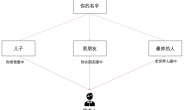最近周末也没啥事就学学Netty,同时打算写一些博客记录一下(写的过程理解更加深刻了)
本文主要从三个方法来呈现:Netty核心组件简介、Netty服务端创建、Netty启动过程源码分析
如果你对Netty有一定的了解, 那阅读起来应该会比较愉快
Netty核心组件简介
ByteBuf
缓冲区ByteBuf是对JDK NIO类库中ByteBuffer的增强
缓冲区直接连接通道两端( 通过通道发送数据时需要先转换为ByteBuf对象, 从通道直接获取的也是ByteBuf对象)
Channel和Unsafe
Channel聚合一组网络I/O操作 — 读、写、客户端发起连接、关闭连接、链路关闭等
UnSafe接口辅助Channel实现I/O操作(不应有用户代码直接调用)
ChannelPipeline和ChannelHandler
ChannelHandler:负责处理I/O事件,每个ChannelHanlder对需要关注的I/O事件实现自己的处理逻辑,一般职责较单一,如解码Handler只做解码操作。
ChannelPipeline:一个ChannelPipeline由多个按一定顺序排列的ChannelHandler组成, I/O事件在pipeline中流动(入站事件从头到尾、出站事件从尾到头),每个handler会对事件进行处理。
NioEventLoop和NioEventLoopGroup
NioEventLoop: 事件循环(Reactor线程),负责监听多个通道的就绪状态,当通道就绪时产生相应的入站事件
NioEventLoopGroup:事件循环池(Reactor线程池),当新的通道被创建时,NioEventLoopGroup会为其分配一个事件循环,后续该通道的所有I/O操作都在该事件循环进行。
Future和Promise
这两个类是Netty对异步的支持,Promise用于设置异步操作结果(写),Future用于获取异步操作结果(读)。
Netty服务端创建
我们从搭建一个简单的服务端程序开始
下面是一个获取当前日期和时间的服务端程序:当客户端输入行为”today”时返回当天日期 “2020-12-11″,输入行为”time”时返回当前时间 “03:11:11″。
public static void main(String[] args) {
//1.线程池配置
ServerBootstrap bootstrap = new ServerBootstrap();
NioEventLoopGroup parentGroup = new NioEventLoopGroup(1);
NioEventLoopGroup childGroup = new NioEventLoopGroup(4);
bootstrap.group(parentGroup, childGroup);
//2.服务端Channel配置
bootstrap.channel(NioServerSocketChannel.class);
bootstrap.option(ChannelOption.SO_BACKLOG, 1024);
//3.子Channel配置
bootstrap.childHandler(new ChannelInitializer<SocketChannel>() {
@Override
protected void initChannel(SocketChannel channel) throws Exception {
//解码器
channel.pipeline().addLast(new LineBasedFrameDecoder(1024));
channel.pipeline().addLast(new StringDecoder(StandardCharsets.UTF_8));
//业务handler
channel.pipeline().addLast(new BusinessHandler());
//编码器
channel.pipeline().addLast(new StringEncoder(StandardCharsets.UTF_8));
}
});
try {
ChannelFuture future = bootstrap.bind(7001).syncUninterruptibly();
future.channel().closeFuture().sync();
} catch (Exception e) {
//todo
}finally {
parentGroup.shutdownGracefully();
childGroup.shutdownGracefully();
}
}
static class BusinessHandler extends ChannelInboundHandlerAdapter {
@Override
public void channelRead(ChannelHandlerContext ctx, Object msg) throws Exception {
String s = (String) msg;
String ret = "";
if ("today".equals(s)) {
ret = new SimpleDateFormat("yyyy-MM-dd").format(new Date());
} else if ("time".equals(s)) {
ret = new SimpleDateFormat("hh:mm:ss").format(new Date());
}
ret += "\r\n";
ctx.channel().writeAndFlush(ret);
}
}
整个应用搭建的过程很简单,归纳起来有四步
1.Reactor线程池配置
2.服务端Channel配置
3.子Channel配置(通过服务端通道创建的子通道)
4.绑定本地端口并启动服务
Reactor线程池配置
我们新建两个Reactor线程池parentGroup和childGroup
parentGroup是服务端通道使用,用于接受新的客户端连接(accept)
childGroup用于处理所有服务端通道创建子通道的网络I/O请求
ServerBootstrap bootstrap = new ServerBootstrap();
NioEventLoopGroup parentGroup = new NioEventLoopGroup(1);
NioEventLoopGroup childGroup = new NioEventLoopGroup(4);
bootstrap.group(parentGroup, childGroup);
服务端Channel配置
服务端Channel配置主要涉及:Channel类型、ChanelOption、AttributeKey(handler一般不用配置)
-
Channel类型配置
Channel的类型我们选用
NioServerSocketChannel— 底层使用的是JDK NIO的 ServerSocketChannel.
bootstrap.channel(NioServerSocketChannel.class);
- 设置ChannelOption 和 AttributeKey
ChildOption:TCP选项, 如接受缓冲区大小(SO_RCVBUF)、发送缓冲区大小(SO_SNDBUF)、内核TCP连接队列大小(SO_BACKLOG)等
AttributeKey:附在Channel上的对象, 可以在多个ChannelHandler之间进行数据共享
bootstrap.option(ChannelOption.SO_BACKLOG, 1024);
bootstrap.attr(AttributeKey.newInstance("TEST"), new Object());
备注:ChannelHandler 用于处理I/O事件,是通道所必须的。因为Netty提供了初始化客户端连接的handler(ServerBootstrapAcceptor),所以对于服务端Channel我们可以不用设置
Channel配置
Channel配置主要涉及:ChanelOption和AttributeKey、ChannelHandler
-
设置ChannelOption 和 AttributeKey
针对每个Channel可以配置ChannelOption和AttributeKey,同服务端通道配置一样。
-
ChannelHandler配置
对于服务端Channel,Netty框架提供了用于接受连接的Handler,我们可以不用设置;但是对于服务端Channel创建的每个子Channel我们需要为其配置Handler,以处理I/O事件。
首先:解码器是必须的。我们业务逻辑中流转的一般是对象,通过配置解码器将字节转换成Java对象(解码器同时需要处理TCP拆包、粘包)
然后:自定义业务处理器用于处理具体的业务逻辑,如上面的BusinessHandler。
最后:需要对结果进行返回时需要配置编码器,用于将输出对象编码成可用于通道传输的ByteBuf对象
对于这个例子:
LineBasedFrameDecoder和StringDecoder是解码器:将一行数据解码成Java中的String对象
BusinessHandler是业务处理器:处理具体的业务逻辑(获取当前日期或者时间)
StringEncoder是编码器:将String对象编码成ByteBuf对象,用于通道传输。
绑定本地端口并启动服务
配置就绪后直接绑定本地端口启动服务
ChannelFuture future = bootstrap.bind(7001).syncUninterruptibly();
到这里通过Netty创建一个服务端应用程序就完成了,下面我们从源码成面看看Netty的启动过程
Netty服务端启动过程源码分析
源码基于4.1分支:做了部分简化,只保留了核心逻辑
从bind方法开始
public ChannelFuture bind(int inetPort) {
return bind(new InetSocketAddress(inetPort));
}
public ChannelFuture bind(SocketAddress localAddress) {
this.validate();
return this.doBind(localAddress);
}
private ChannelFuture doBind(final SocketAddress localAddress) {
//1. 初始化NioServerSocketChannel,并且注册到EventLoopGroup
final ChannelFuture regFuture = initAndRegister();
final Channel channel = regFuture.channel();
//2.1. 注册失败,直接返回
if (regFuture.cause() != null) {
return regFuture;
}
if (regFuture.isDone()) {
// At this point we know that the registration was complete and successful.
ChannelPromise promise = channel.newPromise();
//2.2. 注册成功,直接bind本地端口
doBind0(regFuture, channel, localAddress, promise);
return promise;
} else {
// Registration future is almost always fulfilled already, but just in case it's not.
final PendingRegistrationPromise promise = new PendingRegistrationPromise(channel);
//3.如果注册还未知(因为是异步操作),添加listener到regFuture对象上用于注册完成后进行回调处理
regFuture.addListener(new ChannelFutureListener() {
@Override
public void operationComplete(ChannelFuture future) throws Exception {
Throwable cause = future.cause();
if (cause != null) {
promise.setFailure(cause);
} else {
promise.registered();
doBind0(regFuture, channel, localAddress, promise);
}
}
});
return promise;
}
}
整个bind方法比较简单, 核心逻辑都在doBind方法里面,doBind里的逻辑主要有三步
-
initAndRegister:实例化ServerSocketChannel(这里是NioServerSocketChannel)并注册到事件循环(EventLoopGroup)
-
如果第一步失败,直接返回;如果注册成功,调用doBind方法绑定本地端口启动服务器
-
如果注册结果还未知(reg是异步操作),添加ChannelFutureListener到regFuture对象上用于注册完成后的回调处理
第二和第三个步都比较简单,我们主要需要看下第一步–initAndRegister
initAndRegister(初始化NioServerSocketChannel并注册到EventLoopGroup)
initAndRegister其实是个模版方法,也可以分成三步来分析
- 实例化,这里其实是通过基于反射的工厂方法实例化
- 初始化(由子类实现)
- 注册到EventLoopGroup
final ChannelFuture initAndRegister() {
Channel channel = null;
try {
//1. 实例化,基于反射的工厂方法
channel = channelFactory.newChannel();
init(channel);
} catch (Throwable t) {
//
}
ChannelFuture regFuture = config().group().register(channel);
if (regFuture.cause() != null) {
//
}
return regFuture;
}
第一步和第三步这里我们不做展开,主要看下第二步init做了什么事
init(初始化通道)
下面是ServerBootstrap中的init方法的源码
void init(Channel channel) {
setChannelOptions(channel, newOptionsArray(), logger);
setAttributes(channel, attrs0().entrySet().toArray(EMPTY_ATTRIBUTE_ARRAY));
ChannelPipeline p = channel.pipeline();
final EventLoopGroup currentChildGroup = childGroup;
final ChannelHandler currentChildHandler = childHandler;
final Entry<ChannelOption<?>, Object>[] currentChildOptions;
synchronized (childOptions) {
currentChildOptions = childOptions.entrySet().toArray(EMPTY_OPTION_ARRAY);
}
final Entry<AttributeKey<?>, Object>[] currentChildAttrs = childAttrs.entrySet().toArray(EMPTY_ATTRIBUTE_ARRAY);
p.addLast(new ChannelInitializer<Channel>() {
@Override
public void initChannel(final Channel ch) {
final ChannelPipeline pipeline = ch.pipeline();
ChannelHandler handler = config.handler();
if (handler != null) {
pipeline.addLast(handler);
}
ch.eventLoop().execute(new Runnable() {
@Override
public void run() {
pipeline.addLast(new ServerBootstrapAcceptor(
ch, currentChildGroup, currentChildHandler, currentChildOptions, currentChildAttrs));
}
});
}
});
}
归纳起来其实是把我们通过ServerBootstarp引导类配置的一些参填充到NioServerSocketChannel实例中去了,没有问题。
需要注意这里在socketChannel的pipeline中添加了一个ServerBootstrapAcceptor类型的handler(ServerBootstrapAcceptor用于初始化服务端接受的子通道,感兴趣的可以自己展开)
总结
通过对bind、doBind、initAndRegister、init的几个方法的分析,我们可以Netty的整个启动过程有个大致的认识
1.实例化并初始化NioServerSocketChannel
2.把初始化后的nioServerSocketChannel注册到EventLoopGroup(parentEventLoopGroup)
3.注册成功之后调用绑定本地端口完成整个启动过程
当然,只有对pipeline、handler、eventLoop等有一定的了解才能理解Netty的工作机制
写在最后
TO ME: 2021年第一篇博客,加油! 自己一个字一个字码出来的感觉很好!!
TO YOU: 如果觉得有帮助记得点赞或者推荐哦!



